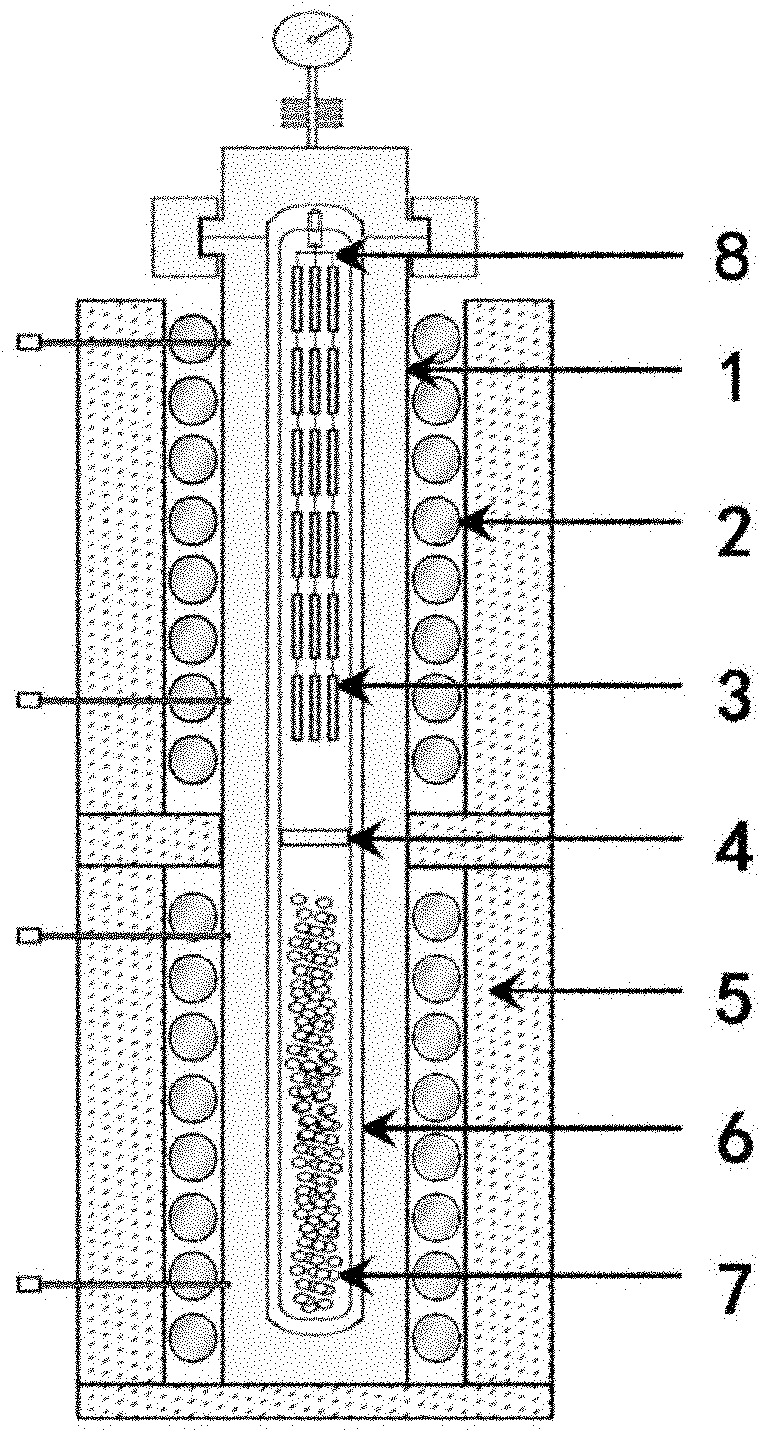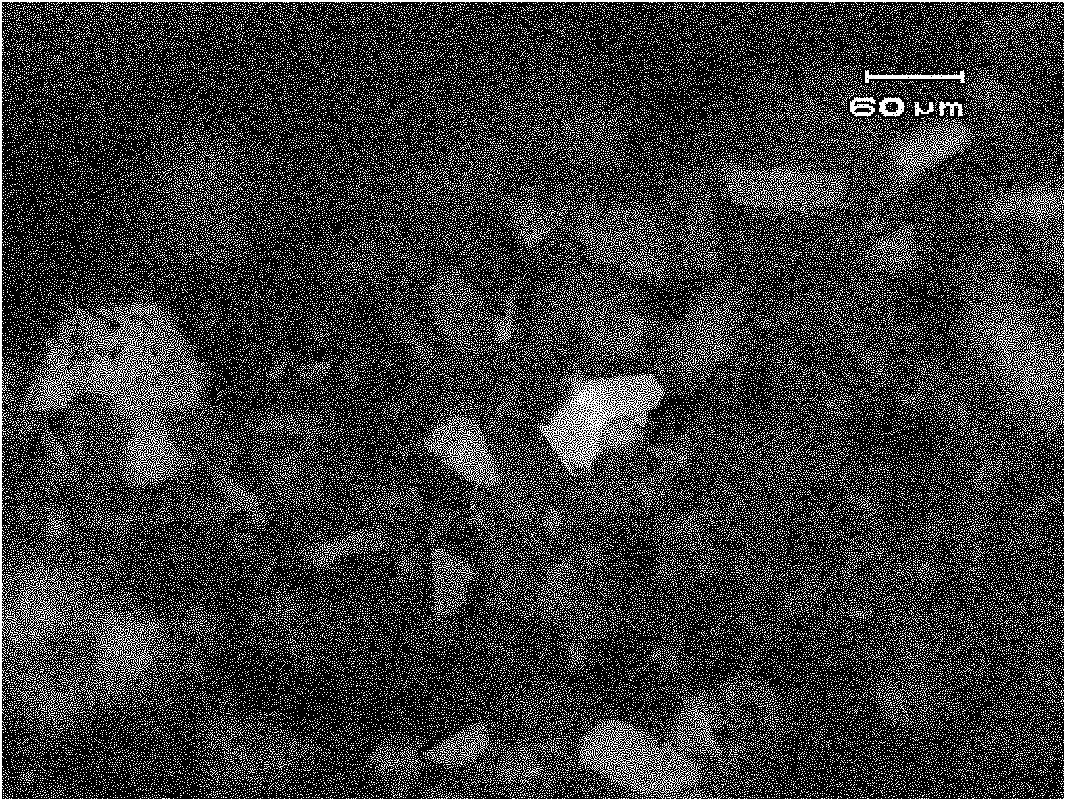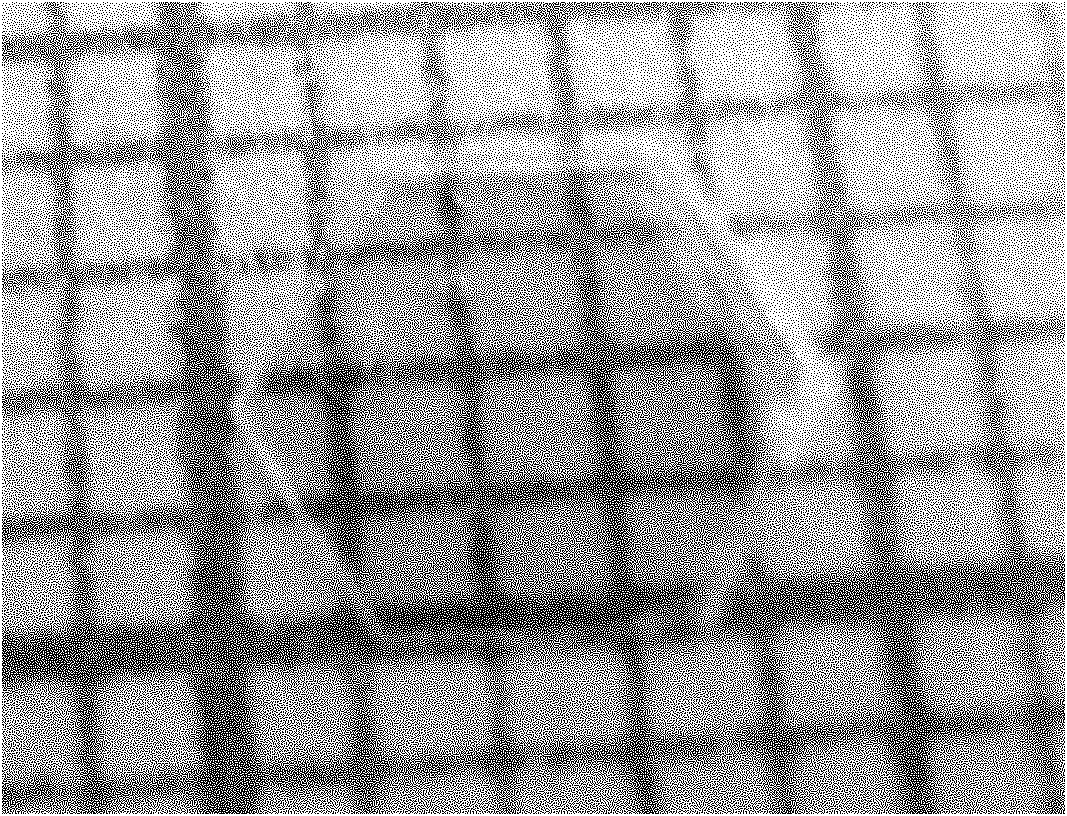Method for growing zinc oxide monocrystalline under hydrothermal condition by utilizing mineralizer
A technology of zinc oxide single crystal and zinc oxide, applied in chemical instruments and methods, single crystal growth, single crystal growth, etc., can solve the problems of high heating temperature, high requirements for hydrothermal reaction kettle and its substrate, etc., and achieve growth Fast speed, low cost, and the effect of reducing costs
- Summary
- Abstract
- Description
- Claims
- Application Information
AI Technical Summary
Problems solved by technology
Method used
Image
Examples
Embodiment 1
[0030] The zinc hydroxide suspension is used as the growth raw material, and placed in a high-pressure reactor made of high-temperature alloy steel with an inner diameter of Φ4cm and a height of 9cm. The inner lining of the high-pressure reactor is polytetrafluoroethylene. Fill the reactor with deionized water, use sodium chloride as a mineralizer, and control the chloride ion concentration in the solution to 0.05mol / L. The pH of the hydrothermal solution was adjusted to 6 by adding sodium hydroxide solution. At the same time, the filling degree of the autoclave is 60%. Place a zinc metal wire as a seed crystal in the solution on the upper part of the autoclave, and seal the mouth of the autoclave. The autoclave was heated with microwaves to keep the temperature of the autoclave constant at 90°C. After one day of heat preservation, ZnO microcrystals can grow on the seed crystal. Such as figure 2 shown.
Embodiment 2
[0032]1 kilogram of zinc hydroxide dense fragments is used as the growth material 7, placed on the bottom of the autoclave 1 made of high-temperature alloy steel with an inner diameter of Φ8cm and a height of 0.5m, and a partition 4 is added above the zinc hydroxide growth material. The inner liner 6 is polytetrafluoroethylene, and there is an insulation layer 5 outside the autoclave. Fill into deionized water in reactor, use the mixture (0.25mol / lZnCl2+0.5mol / l NaCl) of zinc chloride and sodium chloride as mineralizer, add a certain amount of sodium hydroxide to dissolve the The pH value was adjusted to 9, and the chloride ion concentration in the control solution was 1mol / L. At the same time, the filling degree of the autoclave is 80%. After the (0001) oriented ZnO seed crystal 3 is placed in the upper solution of the autoclave with the seed crystal frame 8, the mouth of the autoclave is sealed. Use nickel-chromium resistance wires to heat the autoclave in two sections, up...
Embodiment 3
[0034] 1 kg of zinc oxide dense compact is used as the growth material, and placed in the bottom of the autoclave made of high-temperature alloy steel with an inner diameter of Φ8cm and a height of 0.5m. A partition is added above the zinc oxide growth material, and the inner lining of the autoclave is silver metal. Charge deionized water into the autoclave, use a mixture of lithium chloride and sodium chloride (0.25mol / l LiCl+0.75mol / l NaCl) as a mineralizer, add sodium hydroxide solution to adjust the pH value to 10, Control the chloride ion concentration in the solution to 1mol / L. At the same time, the filling degree of the autoclave is 90% (volume). After placing the (0001) oriented ZnO seed crystal block in the upper solution of the autoclave, the mouth of the autoclave was sealed. Use nickel-chromium-aluminum resistance wires to heat the autoclave in upper and lower sections; a group of resistance wires at the bottom of the autoclave is heated to 280 ° C; a group of res...
PUM
| Property | Measurement | Unit |
|---|---|---|
| Diameter | aaaaa | aaaaa |
Abstract
Description
Claims
Application Information
 Login to View More
Login to View More - R&D
- Intellectual Property
- Life Sciences
- Materials
- Tech Scout
- Unparalleled Data Quality
- Higher Quality Content
- 60% Fewer Hallucinations
Browse by: Latest US Patents, China's latest patents, Technical Efficacy Thesaurus, Application Domain, Technology Topic, Popular Technical Reports.
© 2025 PatSnap. All rights reserved.Legal|Privacy policy|Modern Slavery Act Transparency Statement|Sitemap|About US| Contact US: help@patsnap.com



